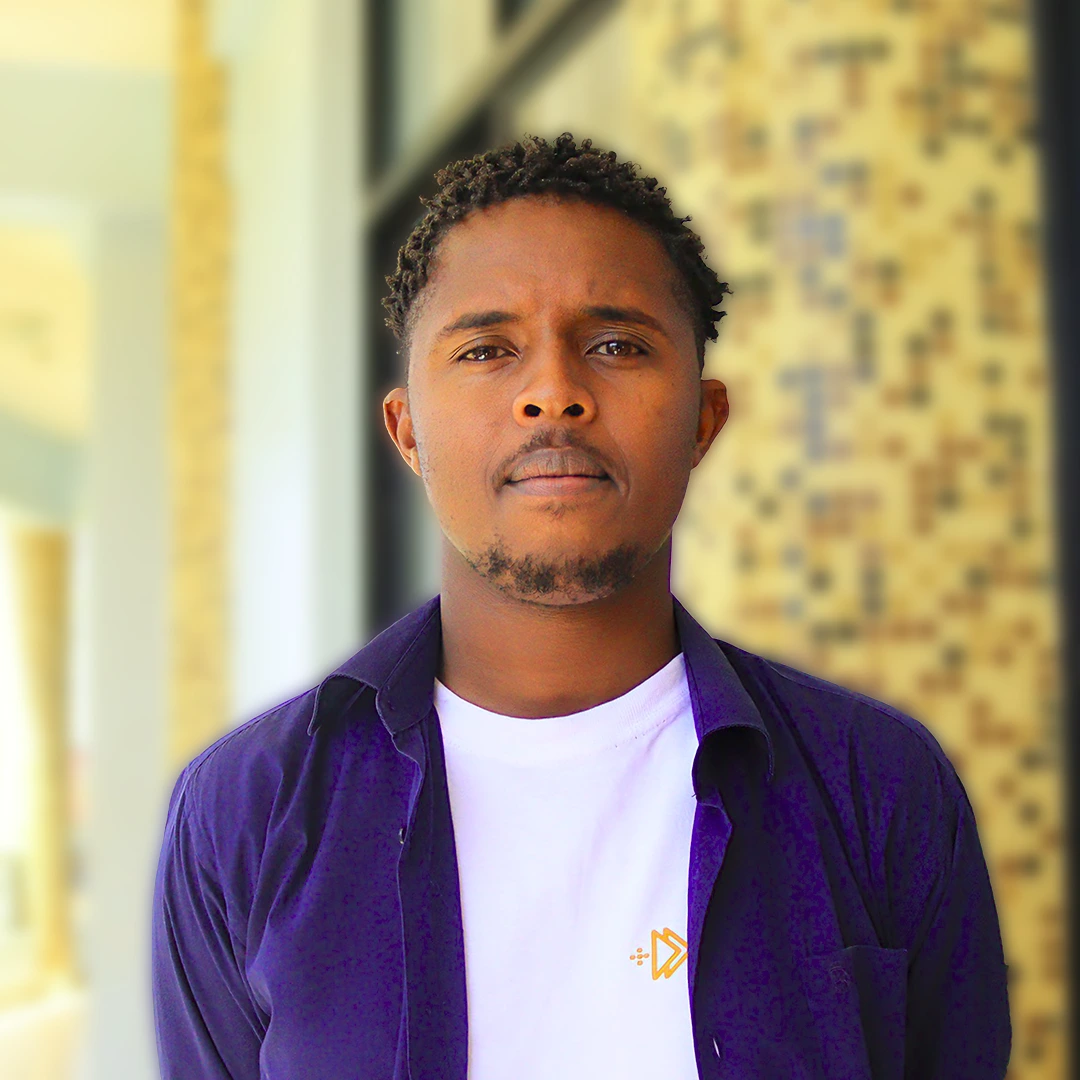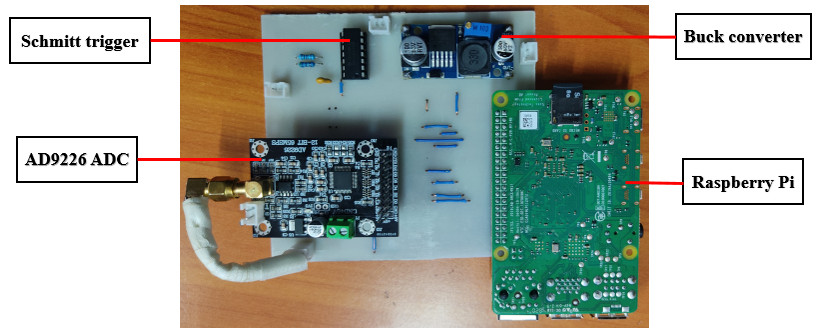
Introduction
On the 20th of November 2022, DSAIL team (photos below) had the opportunity to present work around the DSAIL Camera Trap project to the Women In Conservation Technology program forum facilitated by WILDLABS, Fauna & Flora and the Ol Pejeta Conservancy. This program ran from May 2022 to November 2022, this was their closing workshop.
What is DSAIL
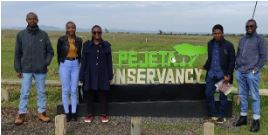
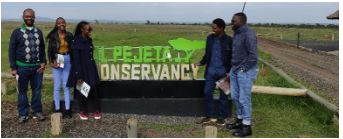
(From Left to Right) Gabriel Kiarie, Lians Wanjiku, Lorna Mugambi, Yuri Njathi, Jason Kabi and Prof Ciira Maina
DSAIL is the Centre for Data Science and Artificial Intelligence, we are based at the Dedan Kimathi University of Technology where we work on research in Environmental Conservation and Monitoring, Health and Agriculture. We take a basics-first approach to use our Machine Learning and Electronics expertise to solve real-world problems in alliance with our research partners and funders. For more information on DSAIL take a look at our website. The team is headed by Professor Ciira Maina and comprises postgrads and undergrads in Engineering, Science and Mathematics.
What is WiCT
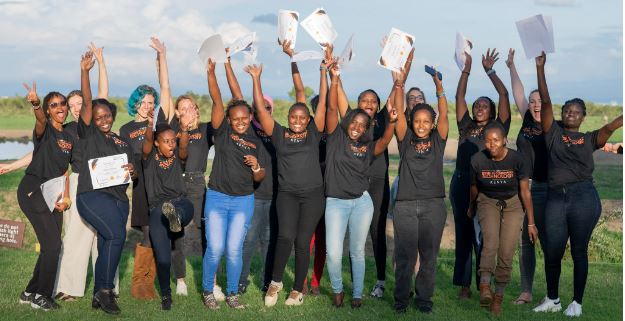
WiCT participants graduating at Ol Pejeta Conservancy
The Women in Conservation Technology training programme was held from May 2022 to November 2022. It involved 15 Kenyan women working in various fields in Wildlife Conservation, Ecology and related areas exploring technological solutions to overcome conservation challenges.
The primary aims of the program are
- To introduce a diversity of hardware, software and data management tools used for wildlife monitoring, wildlife protection and resource management.
- To arrange opportunities for professional development and networking empowering a community of women working in conservation technology across this region.
The program community managers were Stephanie O’Donnell, Netty Cheruto and Talia Speaker from WILDLABS and Dr Meredith Palmer from Fauna & Flora. For more information have a look at their website.
Presentations
Presentations kicked off with Fran Baker and Rosalie Tribe, leaders in Social Impact and Innovation at Arm. They spoke on the impact of digital technology on delivering sustainable, inclusive and equitable solutions.
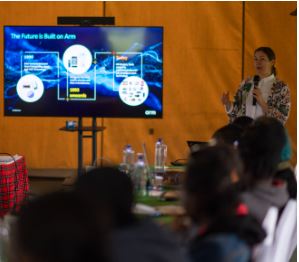
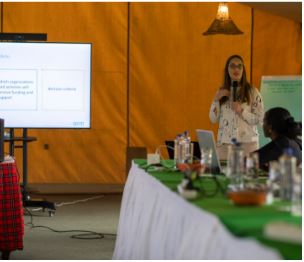
Fran Baker and Rosalie Tribe presented on Arm’s Social Impact and Innovation
Fran also spoke of the potential negative impacts of access to technology, technology design and technology solutions on climate and equality. Rosalie spoke on how Arm funds initiatives; examples are Giga, an initiative looking to connect every school worldwide to the Internet and Simprints, which builds low-cost biometric identification systems connecting 100s of millions to essential services. Find more in their social Impact and innovation report.

Prof Ciira talked about how Data Science Africa hosts workshops and summer schools
Professor Ciira then acquainted the audience with Data Science Africa and the efforts being made to ensure young professionals with interests in end-to-end data science solutions can meet each other yearly, network and discuss. He sensitised that Data Science Africa is interested in ensuring participants find a good balance between formal technical presentations and creating an environment where real exchanges between peers can occur.
Hardware presentation

DSAIL Power Management Board

DSAIL Camera Trap
Gabriel Kiarie gave a presentation on the inner workings of the camera traps and on the current start of the art camera traps and monitoring systems that are used for the collection of ecological data.

Gabriel Kiarie speaking about the various camera traps and how they are used
Kiarie who has worked with Avian Bioacoustics devices talked about the Passive Acoustic Monitoring sensors, which are used to collect sound data that can tell the abundance, distribution and behaviour of vocal animals, from the low Energy AudioMoth to the DSAIL Bioacoustics Sensor. He presented the functionality of different camera traps, introduced the DSAIL Camera Trap and introduced the DSAIL Power Management Board.
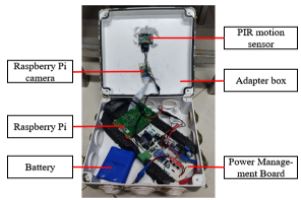
Different parts of the DSAIL Camera Trap

Computer-Aided Design of DSAIL Power Management Board
Jason Kabi then presented the electronic components necessary to realise the camera trap, he mostly spoke on the power requirements of the Raspberry Pi Setup and how the board’s actuators and sensors manage to sustain the Camera Trap’s outdoor performance at different deployment points depending on the solar rays available.

Jason speaks on the electronic board development process
Kabi has worked on water resource monitoring projects and talked about the importance of designing a custom power board especially given the camera trap’s energy requirements, the process of this design, the operation window, the deployment-location choice influences and challenges as well as the power analysis required to enable longer length operation. His slides on Camera Trap Realization and Deployment.
Software presentation

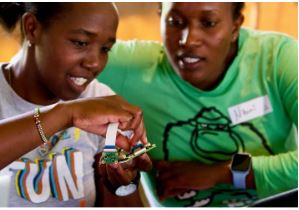
Lorna Mugambi took the audience through the camera trap software
The next session was a technical practical session led by Lorna Mugambi. The session was split into two. In the first part, she introduced the Raspberry Pi-compatible software used to take images and videos. During the session participants in groups of three explored the operation of the ARM-based Raspberry Pi 3 B+ and Raspberry Pi Camera module. Below are some photos taken during the technical session where we explored the Raspberry Pi following her instructions from this notebook.


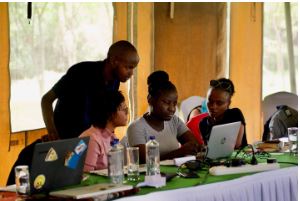
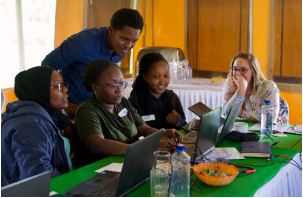
Technical Session on using a Raspberry Pi to take Images and videos
Networking

Stephanie O’Donnell speaking on the Wildlabs network
Stephanie spoke on the principles of successful networking, she emphasized that it is important to take a long-term look at forming relationships, the importance of forming individual and group connections, and having conversation starters.
Data Annotation, Collection and Analysis
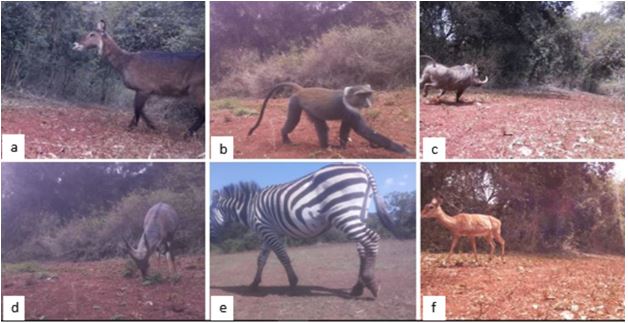
Species in DSAIL-Porini dataset
In the second part of the session, Lorna introduced the DSAIL-Porini dataset, a newly published dataset comprising 8524 manually annotated images of animals from the DeKUT Conservancy. There are six species of animals: Impala, Zebra, Warthog, Waterbuck, Bushbuck and Sykes’ Monkey. She explained how the hardware explained above had to be camouflaged to be non-invasive, and how the selection of camera trap placement had to be tied to feeding and watering behaviours. She also spoke of the data annotation process and the challenges she faced. She spoke of the time-consuming nature of manual annotation and believes this is a pain point many in the audience shared. For more information find have a look at DSAIL-Porini Presentation

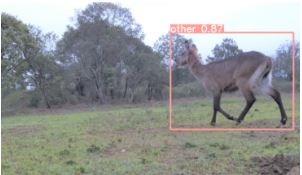
Results of an autodetection model designed to help with annotation of data

Yuri Njathi and Lians Wanjiku demoing the autodetection annotation tool
Lians spoke on how modern object detection works, she gave a brief introduction to the YOLO detection model and how to train such a model. Yuri demoed how this autodetection model was used to count animals in the DSAIL-Porini dataset and how geographical tracking can let a conservationist understand animal behaviour. The video seen in the image above was taken at the Ol Pejeta conservancy courtesy of Talia Speaker.
Feedback and Q and A
There was interest in the cost of designing the DSAIL Camera Trap and whether the camera trap and autodetection model could be used to monitor insects and marine life during the Q and A.
Preparation
Before the workshop it was necessary to understand the work the participants in the audience were up. Ample information was found on WILDLABS.Net’s official website here, this video by Dr Meredith Palmer on Innovations in Wildlife Monitoring and the Fauna & Flora page was very informative before attending the workshop. We went through a bit with the team and I believe this and our internal DSAIL preparations prepared us for the workshop. Our familiarity with the Ol Pejeta Conservancy also definitely helped.
Overall Experience
As per the aims of the WiCT program, we introduced the audience to DSAIL’s wildlife conservation tools. The WiCT workshop also created a valuable opportunity for people from WiCT, DSAIL, DSA and Arm to network with each other creating a roadmap for future work together in conservation.
Potential and more work to be done
When you think of Environmental Conservation, the sheer scale of what can be done to keep the ecological system balanced is mindblowing. From trying to repopulate the remaining members of a prey or predator endangered species, to counting the number of animals in the DeKUT conservancy and trying to make sure they have the right environment to stay alive and thrive, or trying to incubate eggs laid by a tortoise, researching how the water level in the Ewaso Nyiro Catchment area affects the Ewaso Nyiro River, to trying to reduce the workload of rangers by monitoring how a conservancy fence works or listening to the sounds made by bats and birds as indicator species for human encroachment or even trying to keep different species of bees and ants alive. There are many examples of how different researchers, ecologists, and conservationists are trying to keep the wildlife around us not only alive but really thriving. When you think about these examples you realize the sheer scale of work required to secure biodiversity. You also realize that not only will we be required to work together but we will also have to find ways to increase a single individual’s impact so that our environment may remain in balance. It was a pleasure attending the workshop and we wish all the best to the participants and organizers.

WiCT participants celebrating graduation

WiCT workshop organising team
